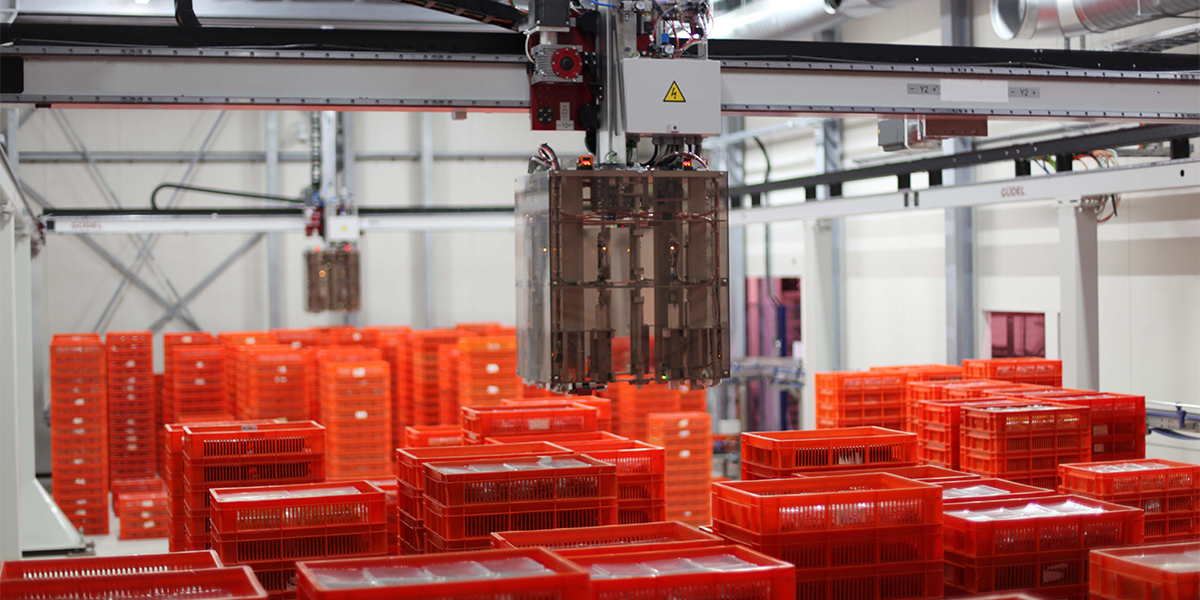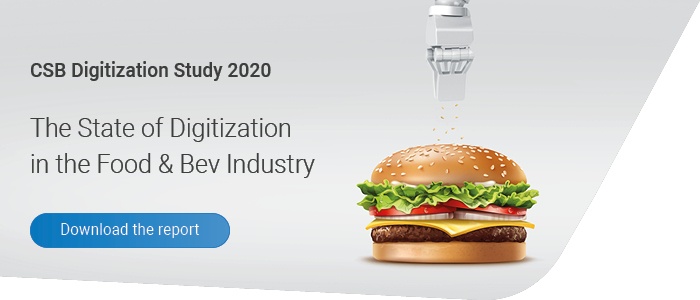Automated intralogistics increases performance. How this works can be seen at the Dutch enterprise ProMessa.
ProMessa is on a road to success. In 2016, one of the company's products was awarded the "Captain of the Category" prize. This prize is awarded to particularly high-quality and popular products sold in Dutch supermarkets. Most of the award-winning products are produced by the large groups such as Friesland Campina, Coca-Cola, Unilever or Dr. Oetker. Yet ProMessa not only keeps up with the big industry players in terms of product quality, but also in terms of performance. Their recipe for success: A logistics solution developed and realized by CSB-Automation AG. “We deliver to about 1,200 supermarkets and we need an innovative logistics system so we can handle our vast product range in an efficient manner. Our customers can order each item on short notice and in smallest quantities. Everyone who places their orders in time usually will receive the goods on the very same day,” explains managing director Harold Rouweler. Performance is increased considerably with the new logistics solution: “We have nearly doubled our output - sometimes to more than 100,000 packages per day. At Christmas 2015, we even managed 150,000 packages,” reports Harold Rouweler. And ProMessa’s turnover has even tripled and now reaches over 70 million euros.
Robot storage for fast movers
Where in the past, goods were moved manually from A to B, today state-of-the-art robotic technology, conveyor system components, sorters and a software solution work
together perfectly. Just like in other intralogistics systems, the software is the key also for ProMessa: it organizes and monitors two automatic crate storages, robot units, four automatic weigh labeling lines with connected sorters, an automatic dispatch warehouse as well as a conveyor system.
One unique aspect at ProMessa is the gantry storage robot for fast-moving items, which turns over a large amount of products in a short time. This is a special storage technique relatively new to the food industry: The containers are not deposited in customary shelves, by they are directly stacked hygienically on the warehouse floor. When existing from storage up to seven containers can be moved simultaneously, which ensures very high performance. The FIFO principle is adhered to at all times as the portal robot always removes the crate that is at the bottom of the stack. There is also a classic single-position high-bay storage inventory with a capacity of 7,000 bin locations. This is where all low-quantity items are stored.
After a corresponding signal from the software, the crates are moved to the four weigh
labeling lines with connected goods-to-man picking sorters. The software optimally combines the order data, products and container, then the items are moved to the picking lines and labeled. Besides quantities and volumes, the system calculates the number of required containers, the necessary material flows and the optimal conveyor tracks for loading the trucks in accordance with routes and subsidiaries. In the sorter, the products are finally ejected automatically to customer channels and distributed to the containers. "Our staff can handle numerous orders in parallel without any errors and pick the items directly for the dispatch crates. As a result, we can process our large variety of products in an efficient manner, irrespective of the quantities ordered by our customers. The order quantity virtually has no effect anymore on the logistics costs,” says Rouweler.
Decoupling production and picking
Frerich Kröner, member of the management board of CSB-Automation AG, explains a further benefit of the solution: "The entire intralogistics system is based on the principle of decoupling process steps. In the planning stage, the aim was to enable work in all core processes from production up to shipping independent of any upstream and downstream processes and to reach a permanently high level of productivity and flexibility."
The high-performance dispatch warehouse is one of the key elements for success. It secures optimal picking of customer orders which are compiled as stacks of crates in the course of the day. The CSB-System generates individual sub-orders from the customer orders on hand, depending on the availability of the goods. Despite the product diversity, production can work with optimal lot sizes and independently of the picking and dispatch processes. Picking of an item only starts after the required goods quantities have been stored in the two buffer storages. The four weigh labeling lines equipped with multiroll printers as well as the four connected sorters are thus capable of combining between 1,400 and 2,400 mixed containers per hour, depending on the order structure.
Delivery performance of up to 99 percent
Today, ProMessa can respond even faster to reorders without having to build up large stocks. Apart from that, order lead times have been significantly been reduced. Orders can be entered in the ERP system all day. Usually, they are ready for shipping within 12 hours or on the same day.
“In the past, we had a lot more buffer that we had to have on stock. Thanks to the speed of our logistical system, we now buffer only pre-packaged non-labeled goods for one day,” Rouweler explains. Daily deliveries to customers can be made without any problems even with very short order lead times. The delivery performance currently is over 99 percent.


